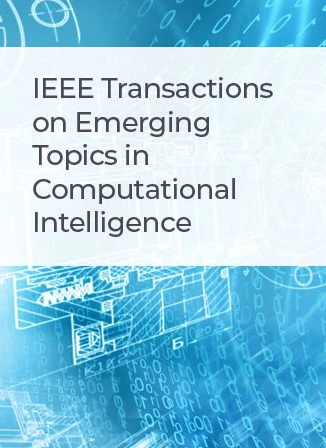Exploiting High Performance Spiking Neural Networks With Efficient Spiking Patterns
IF 5.3
3区 计算机科学
Q1 COMPUTER SCIENCE, ARTIFICIAL INTELLIGENCE
IEEE Transactions on Emerging Topics in Computational Intelligence
Pub Date : 2025-02-21
DOI:10.1109/TETCI.2025.3540408
引用次数: 0
Abstract
Spiking Neural Networks (SNNs) use discrete spike sequences to transmit information, which significantly mimics the information transmission of the brain. Although this binarized form of representation dramatically enhances the energy efficiency and robustness of SNNs, it also leaves a large gap between the performance of SNNs and Artificial Neural Networks based on real values. There are many different spike patterns in the brain, and the dynamic synergy of these spike patterns greatly enriches the representation capability. Inspired by spike patterns in biological neurons, this paper introduces the dynamic Burst pattern and designs the Leaky Integrate and Fire or Burst (IF&B) neuron that can make a trade-off between short-time performance and dynamic temporal performance from the perspective of network information capacity. IF&B neuron exhibits three modes, resting, Regular spike, and Burst spike. The burst density of the neuron can be adaptively adjusted, which significantly enriches the characterization capability. We also propose a decoupling method that can losslessly decouple IF&B neurons into equivalent LIF neurons, which demonstrates that IF&B neurons can be efficiently implemented on neuromorphic hardware. We conducted experiments on the static datasets CIFAR10, CIFAR100, and ImageNet, which showed that we greatly improved the performance of the SNNs while significantly reducing the network latency. We also conducted experiments on neuromorphic datasets DVS-CIFAR10 and NCALTECH101 and showed that we achieved state-of-the-art with a small network structure.利用高效脉冲模式开发高性能脉冲神经网络
尖峰神经网络(SNNs)利用离散尖峰序列来传递信息,这在很大程度上模仿了大脑的信息传递。尽管这种二值化的表示形式极大地提高了snn的能量效率和鲁棒性,但snn的性能与基于实值的人工神经网络之间存在很大差距。大脑中有许多不同的脉冲模式,这些脉冲模式的动态协同极大地丰富了表征能力。受生物神经元的尖峰模式的启发,引入动态Burst模式,从网络信息容量的角度设计了能够在短时性能和动态时间性能之间进行权衡的Leaky Integrate and Fire or Burst (IF&B)神经元。IF&B神经元表现为静息、规则峰和突发峰三种模式。神经元的爆发密度可以自适应调整,极大地增强了表征能力。我们还提出了一种解耦方法,可以将IF&B神经元无损解耦为等效的LIF神经元,这表明IF&B神经元可以有效地在神经形态硬件上实现。我们在静态数据集CIFAR10、CIFAR100和ImageNet上进行了实验,结果表明我们极大地提高了snn的性能,同时显著降低了网络延迟。我们还在神经形态数据集DVS-CIFAR10和NCALTECH101上进行了实验,结果表明我们用一个小的网络结构达到了最先进的水平。
本文章由计算机程序翻译,如有差异,请以英文原文为准。
求助全文
约1分钟内获得全文
求助全文
来源期刊

IEEE Transactions on Emerging Topics in Computational Intelligence
Mathematics-Control and Optimization
CiteScore
10.30
自引率
7.50%
发文量
147
期刊介绍:
The IEEE Transactions on Emerging Topics in Computational Intelligence (TETCI) publishes original articles on emerging aspects of computational intelligence, including theory, applications, and surveys.
TETCI is an electronics only publication. TETCI publishes six issues per year.
Authors are encouraged to submit manuscripts in any emerging topic in computational intelligence, especially nature-inspired computing topics not covered by other IEEE Computational Intelligence Society journals. A few such illustrative examples are glial cell networks, computational neuroscience, Brain Computer Interface, ambient intelligence, non-fuzzy computing with words, artificial life, cultural learning, artificial endocrine networks, social reasoning, artificial hormone networks, computational intelligence for the IoT and Smart-X technologies.
 求助内容:
求助内容: 应助结果提醒方式:
应助结果提醒方式:


